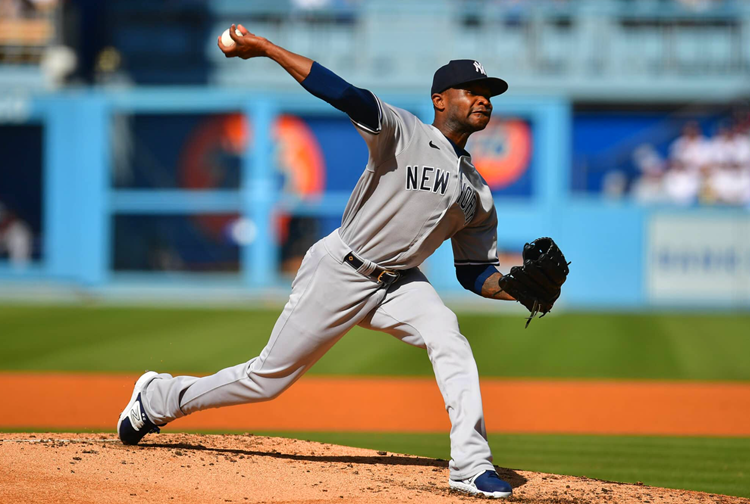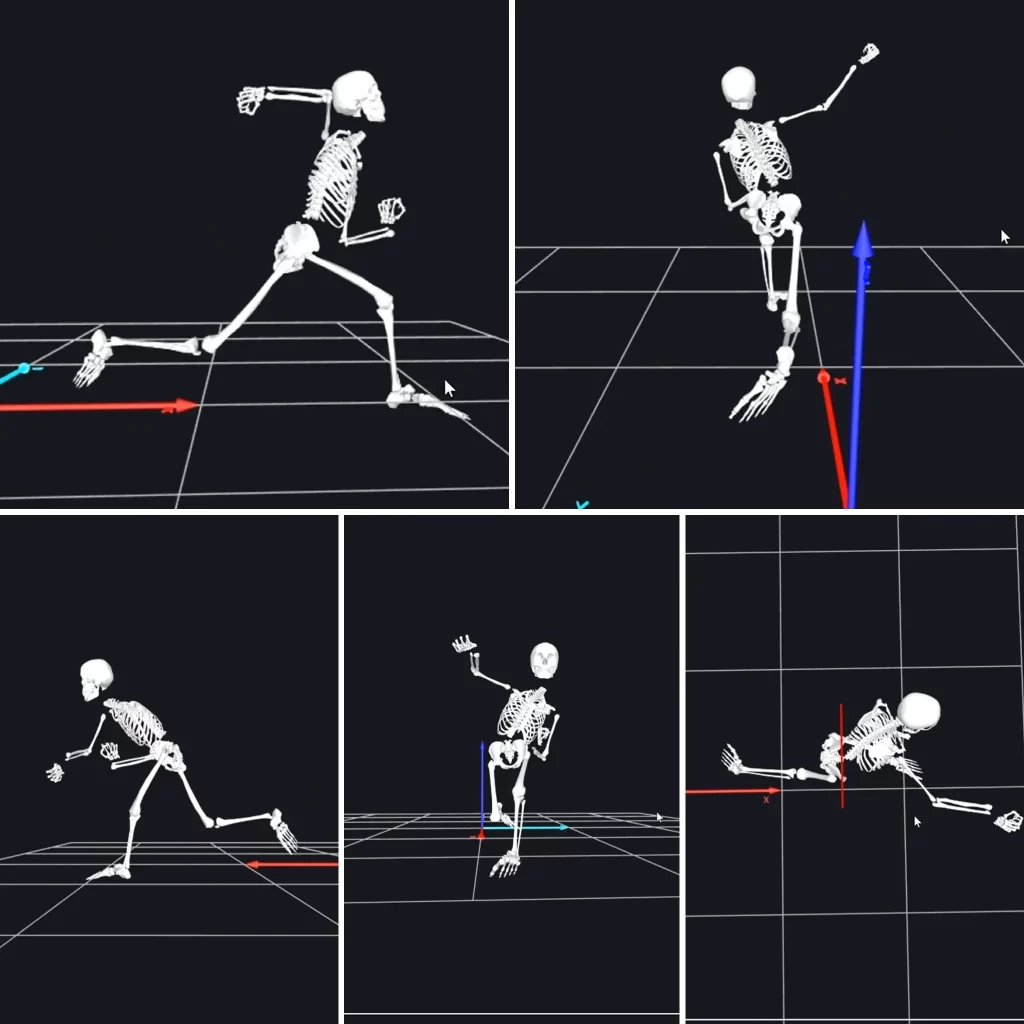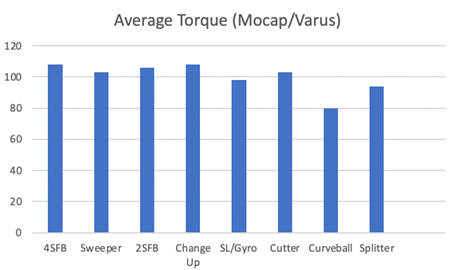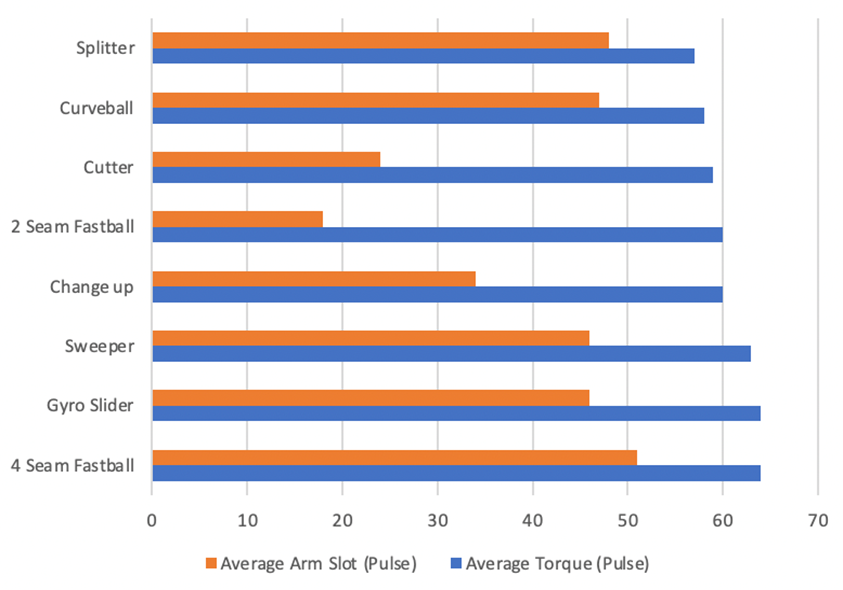
With pitch design and pitch data becoming so prevalent in the game of baseball today, pitches like the sweeper and splitter are increasingly popular by pitchers ranging from youth to professional. A question that is always asked by parents and athletes is: “Is this pitch bad for my arm?” In this article we will dive into elbow torque (stress), how it is measured and break down which pitches put more “strain” on the arm/shoulder than others. Essentially exploring the “myths” that come with specific pitches.
Now let’s dive in…
What is elbow torque?
During the throwing motion, the arm goes through a series of rapid and forceful movements which can lead to significant stress on the elbow joint. There are two ways to measure torque: valgus and varus. These two types of torque are equal in magnitude but differ in the direction they are applied to the arm and subsequently the components of the arm in which they impact.
Valgus Torque – Valgus torque applies an outward stress to the elbow joint, pushing the arm in a backwards direction. This force is prominent during the arm cocking and acceleration phase and pushes the elbow away from the body. Valgus torque puts strain on the medial or inside of the elbow specifically impacting the UCL. Over time, repeated instances of high valgus torque can lead to UCL injuries which are common amongst baseball pitchers and require Tommy John surgery for repair.
Varus Torque – Varus torque is equal in magnitude to valgus torque but opposite in the direction in which it is acting. It is a torque created by the elbow to resist the pitching torque (Valgus) and occurs mainly during the late deceleration phase into the follow through when the arm is transitioning from being externally to internally rotated. This type of torque places strain on the outside (posterior) of the elbow specifically the MCL and can cause posterior elbow pain and injuries with repeated exposure.
This image from Driveline Baseball is a great way to conceptualize the difference between valgus and varus torque:

For this analysis, we used two different methods for measuring torque:
-
- Our in-house Qualisys Motion Capture System (“Mocap”)
- Driveline Pulse (formerly Motus Sleeve)
How does MOCAP measure torque?
Motion capture uses a 3 dimensional tracking system to record the movements of the elbow during the entire pitching sequence. The angular velocity and location of the elbow is utilized to calculate both varus and valgus torque values measured in newton-meters. This value is also used to create a torque-velocity ratio which takes into account ball velocity as another factor. Our in-house analysis has historically focused on varus torque for measurement and comparison purposes.

How does Pulse measure torque?
The Driveline Pulse is an IMU sensor that helps athletes monitor their workload through specific metrics of throwing intensity and throwing volume. The three metrics that are used to measure throwing intensity are: arm speed, arm torque, and ball velocity. What the pulse is measuring when it quantifies torque is: “The measurement of the peak side-side (Valgus) stress on the elbow during a throw.”
Valgus torque, which typically happens at max external rotation, is one of the biggest contributors to elbow injuries in baseball players. Despite not having an exact 1:1 ratio, torque and velocity/intent are strongly correlated. When the velocity and intensity of a throw increase, more likely than not, the torque on the elbow will increase as well. Obviously, there is a point where the level of increase becomes dangerous for a pitcher’s arm health and could put them at a higher risk for injury.
It is important to note that wearable IMU sensors have been shown to under-estimate torque.
According to a study by Boddy et al., 2019 that explores wearable sensors as an alternative to marker-based motion capture in pitching delivery, “The stress metric was found to be 41 Newton meters (Nm; 38.7%) less when compared to elbow torque from motion capture systems, and 42 Nm (39.3%) less when compared to shoulder torque”.
This perhaps explains why our data from the Mocap and the Pulse are not equal in magnitude. For this reason, we can find trends and compare the Pulse data within itself but should not make comparisons with the Mocap torque-specific results. “Because the numerical outputs from the Motus BASEBALL unit are noticeably different from the outputs from marker-based motion capture outputs, which is the gold standard of biomechanical analysis, Motus BASEBALL’s best use may be in relative comparisons of the same athlete” (Boddy et al., 2019).
How we will create torque metrics for each pitch type:
Both the Driveline Pulse and Qualisys Motion Capture were used simultaneously to obtain torque values for each pitch and various pitch types. There are 8 different pitches to be evaluated: 4-seam fastball, 2-seam fastball, cutter, change-up, splitter, curveball, sweeper, and gyro slider. The athlete will throw each pitch, 3 times, and the average torque will be calculated from those individual trials.
Conclusion / Findings:
By utilizing both the Mocap and the Driveline Pulse we were able to account for both varus and valgus torques and its impact on the elbow during the throwing motion. Although we were not able to compare the two directly, we were able to see similar trends within the two data sets. We were able to conclude that fastballs and changeups rank very closely to one another, both varus and valgus torque values, and appear to be the pitches that generate the most torque. On the opposite side of the spectrum, splitters and curveballs both ranked on the lower end of the torque values for both varus and valgus torques. The findings from this simple experiment supported our hypothesis that different pitch types generally create similar stress levels with some degree of variance.


Furthermore, our experiment suggests that the arm slot of a pitcher does not necessarily have a direct impact on torque. This, contradicts many current beliefs and more testing is needed, but we may want to start thinking about adjusting torso position accordingly in order to better maintaining the plane of rotation of the shoulders as an alternate way to maintains equal distribution of force and in the meantime causing no increase or decrease in torque.
In this chart you can see how despite a difference in arm slot, the amount of valgus torque measured for each pitch is not substantially higher on a specific type of pitch:

Through more current biomechanical studies, pitching analysis, and our focused research, it has become more evident that the factors influencing elbow torque are more complex and multifaceted. Torque is highly impacted by an individual’s pitching mechanics and cannot simply be contributed by pitch type. These findings highlight the importance of proper mechanics, conditioning, and individualized training while also allowing pitchers to expand their repertoire without fear that a certain pitch will cause injury any more than the rest.
By Cristina Avato (RPP Bio-mechanist) and Jake Lebovitch (RPP Remote Performance Coach)
References
-
- Loushin, Stacy R., et al. “.Are 4D Motion Sensors Valid and Reliable for Studying Baseball Pitching?” journals.sagepub.com, 24 June 2019, https://doi.org/10.1177/03635465231166423. Accessed 29 September 2023.
- O’Connell, Michael. “Elbow Stress, PULSE, and Velocity.” Driveline Baseball, 28 October 2016, https://www.drivelinebaseball.com/2016/10/elbow-stress-pulse-velocity/. Accessed 29 September 2023.
- Boddy, K. J., Marsh, J. A., Caravan, A., Lindley, K. E., Scheffey, J. O., & O’Connell, M. E. (2019, January 24). Exploring wearable sensors as an alternative to marker-based motion capture in the pitching delivery. PeerJ. https://www.ncbi.nlm.nih.gov/pmc/articles/PMC6348088/
